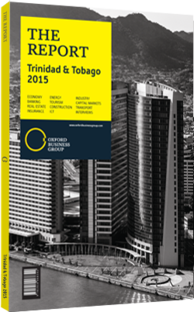Ravi Tewari, Group CEO, Guardian Holdings: Interview

Interview: Ravi Tewari
What opportunities exist to boost development in industrial and specialty risk products?
RAVI TEWARI: Trinidad and Tobago is at a very interesting point of its development. The country has the opportunity to change the nature of its economy from one that is based primarily on extraction to one that is based on the secondary uses of oil and natural gas. This is creating substantial growth in economic activity and precipitating risk coverage for these industries.
Additionally, global conditions are forcing local entrepreneurs to become more creative and shift their focus from the traditional import/export activities towards new industries. There is an ongoing discussion about the creation of transport, information and communications technology, and medical clusters that will greatly expand the breadth of economic activities carried out in the country. All of this is extremely exciting for insurance firms, as it offers the opportunity for marketing different lines of products.
Insurance for the energy sector has been largely carried out overseas; this has a lot to do with the size of the projects, and is also partly due to historical reasons. When T&T’s energy industry started to develop, the local insurance sector’s capital was limited. As the range of industrial activities expands, I do not see the same thing happening again.
We now have fairly mature companies, a solid amount of capital in the sector and the share scale of most industrial projects is different. However, I believe that local insurers will continue to partner with foreign insurers for reinsurance. We will be the providers on the ground, do the underwriting and the clearance, but there will still be room for foreign capital to flow into the insurance of industrial risks.
How will the introduction of technology impact the sector’s distribution channels?
TEWARI: In T&T life, health and pension lines are almost exclusively distributed through tied agents. The high value of these lines is placed on the relationship element of sale. I expect the use of technology to have more of an impact on the service aspect of policies than on the sales. For property and casualty insurance most of the distribution happens through brokers.
The question as to what impact internet sales and direct sales will have naturally arises on the personal lines of the property and casualty business. That is something I think insurers will have to keep their eye on in the short to medium term, as the market could change very quickly from being a broker market to being an internet-driven one. For these kinds of insurance lines, the impact of technology has been immediate all over the world, so I think it is only a matter of time before it happens in T&T.
What steps can be taken to increase per capita penetration of life insurance?
TEWARI: The sector is nowhere near to fully tapping into the life insurance market. If you talk to people, you can tell they are underinsured. I believe the increase in penetration will be driven by two main factors. One has to do with the service. There is a gap between what the average person in the market desires and the service that the average provider can deliver. There needs to be heavier investment within the sector in upgrading service capabilities. Once that happens, I believe it will precipitate deeper penetration.
The other factor has to do with product. There are lines of business for which there is demand – such as long-term care and temporary disabilities – but the product supply is not as widespread. Additionally, there is a more subtle element of the product design, which has to do with the modularity of products, that could boost penetration. We are moving towards a generation of clients that expect the products to be customised for them, while the current generation of insurance products is still quite cookie-cutter. A big portion of local and foreign investment will be focused on the technology needed to deliver these changes.
You have reached the limit of premium articles you can view for free.
Choose from the options below to purchase print or digital editions of our Reports. You can also purchase a website subscription giving you unlimited access to all of our Reports online for 12 months.
If you have already purchased this Report or have a website subscription, please login to continue.

